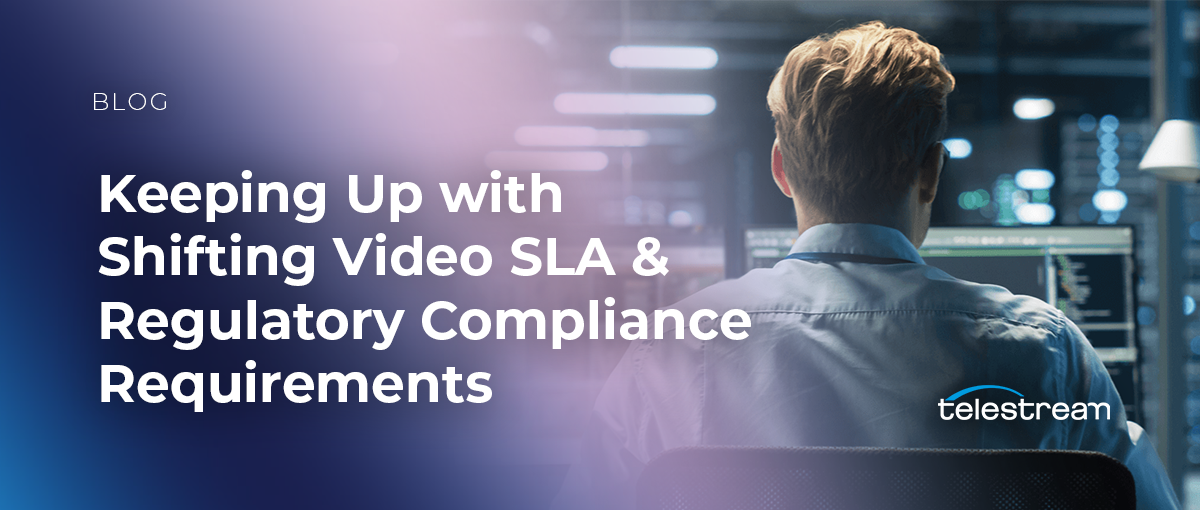In a previous blog, we covered how to overcome challenges associated with adhering to video SLA & regulatory compliance through automation. Cloud-native solutions for Video Quality Monitoring allow content providers to have a complete picture of whether there are any issues, failures, or areas of non-compliance so they can take swift action to minimize revenue loss and avoid punitive damages for non-compliance.
As the OTT streaming space continues to grow, with large-scale and smaller-scale or regional content providers, these challenges can seem intimidating. Local and regional regulations that are specific to certain countries add even more compliance confirmation challenges. This is an especially big headache for streaming video service providers that cross international borders.
SLAs & Regulations Are Always On The Move
In the U.S., two video compliance regulations were put in place in 2010:
- the Commercial Advertisement Loudness Mitigation (CALM) Act, controlling ad loudness
- the Communications and Video Accessibility Act (CVAA), outlining closed captioning requirements
The CALM mandate requires video services to maintain consistent audio levels between primary content and ads, within a specified decibel range. If an ad’s audio levels exceed the primary content’s audio level the penalties can easily add up, especially with spikes in advertising. The Twenty-First Century CVAA is an amendment to the 1934 Communications Act, signed into law in 2010. This act defined updated requirements for making content accessible to those with disabilities, updating the regulations for current-era telecommunications and streaming video services.
Variations of these laws are in place, worldwide. Modern technology solutions, such as Telestream’s iQ Video Quality Monitoring technology, can easily help you adhere to regulations like audio settings, closed captioning, and more.
Navigating Compliance with Regional Ad Loudness Regulations
Europe, China, Japan, Australia, and dozens of other countries have similar regulations. Most of these stem from International Telecommunication Union (ITU) recommendations and the 1770-3 standard. There is substantial variety in how each region adopts these standards, though. This brings a significant risk of programming conforming to some regulations but not to others. One country may have a slightly greater tolerance for loudness in ads, for instance, which would not pass muster in countries with tighter controls.
A 2014 Broadcast Bridge report pointed out that a CALM Act-compliant program originating in the U.S. may fall short of meeting the European standard. Alternatively, one reaching the U.S. from Brazil may be in violation of the CALM Act. Automated audio compliance analysis from Telestream’s iQ solutions for linear and streaming content flows can mitigate risks on a per-destination basis. Content and service providers can maintain compliance locally and abroad without worry.
Video SLA & Regulatory Compliance for Closed Captions Across the Globe
Similar geographical nuances apply for closed captioning. CVAA-like captioning rules are widespread, though with more exceptions than in the case of ad loudness regulations. Cross-border variations like these pose an even greater challenge to video SLA & regulatory compliance. For example, the FCC’s rules simply mandate:
“Captions must coincide with their corresponding spoken words and sounds to the greatest extent possible and must be displayed on the screen at a speed that can be read by viewers.”
In contrast, some countries’ rules are much more definitive with specified limits on factors like:
- Lag time between audio and text
- Caption render speed (in terms of words per minute or even characters per second)
- Information about non-verbal content elements
- Error measurement
- Error permission standards
Still, there are additional factors to consider, such as rules distinguishing between pre-recorded and live programming, and how to apply captioning in multilingual societies. Multilingual regions, like Canada, require captions in certain languages like French or English depending on the locale, but specify slightly different approaches to captioning for each language.
Regulations That Take It A Step Further
Going beyond the content of the ads, there are many other types of video SLA & regulatory compliance regulations to be mindful of that are unique to certain regions. Another common requirement is that a certain percentage of content flowing into a given region must be produced in that region. This has become commonplace in many countries, including EU members, the U.K., and many others. Australia is enforcing a variation on this that allows the government to demand investments in local content if their Australian content outlays are less than 5% of total content spend.
The European Union’s Audiovisual Media Services Directive sets strict limits on the amount of advertising that can run in an hour of programming, depending on whether the programs are running during peak or off-peak hours. South Korea’s “service stability law” allows internet service providers to collect network fees from streamed service providers who access their end users. Service providers incurring such fees who want to impose a share of the costs on their content suppliers need to be able to demonstrate content usage in the extended service domains merits such surcharges.
It is clearer than ever that video SLA & regulatory compliance issues continue to be a thorn in the side of content suppliers and distributors. They need reliable, automated, efficient workflow solutions for monitoring and analyzing compliance. The workflow automation and orchestration afforded by Telestream’s cloud-native Video Quality Monitoring solutions provide an end-to-end approach for sustaining high-quality video performance that consumers demand across all screens, marking a major win/win in this new era of network entertainment. For more information, visit https://www.telestream.net/iq/overview.htm



